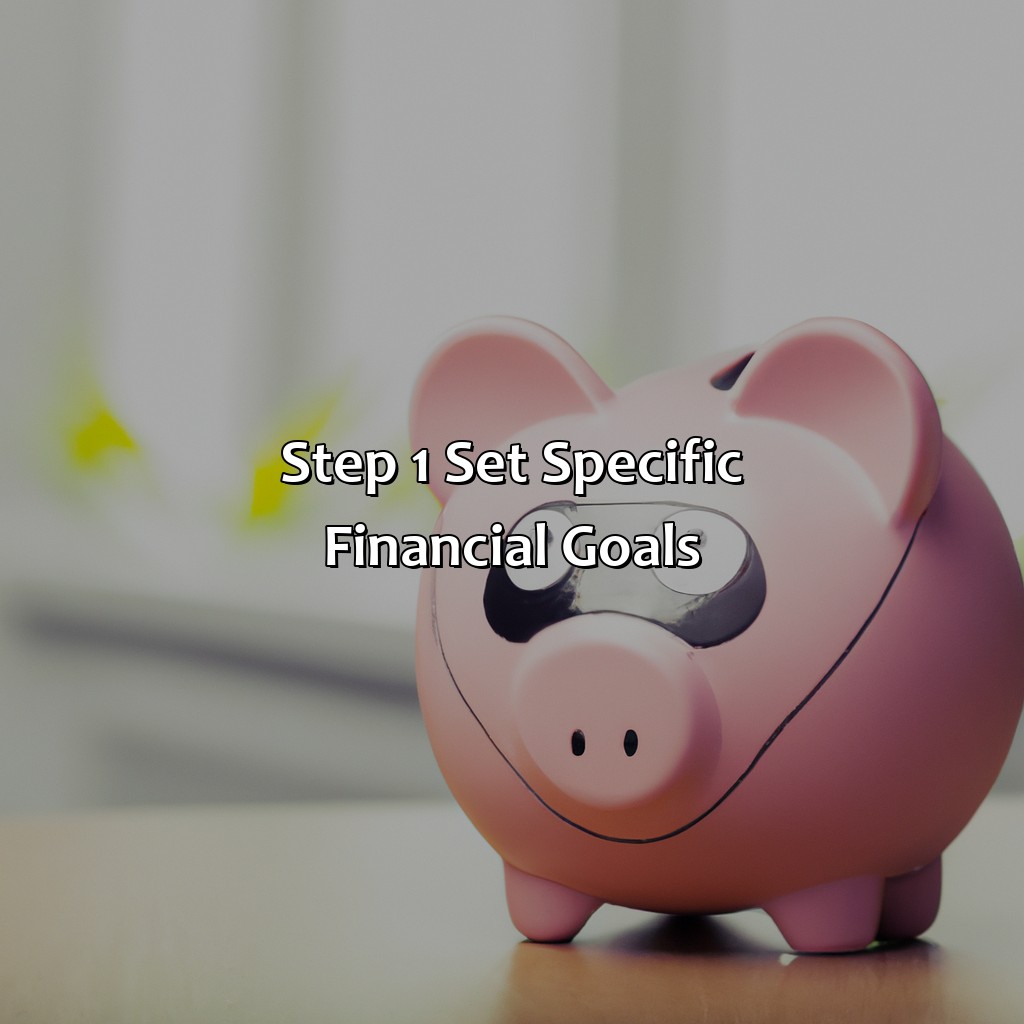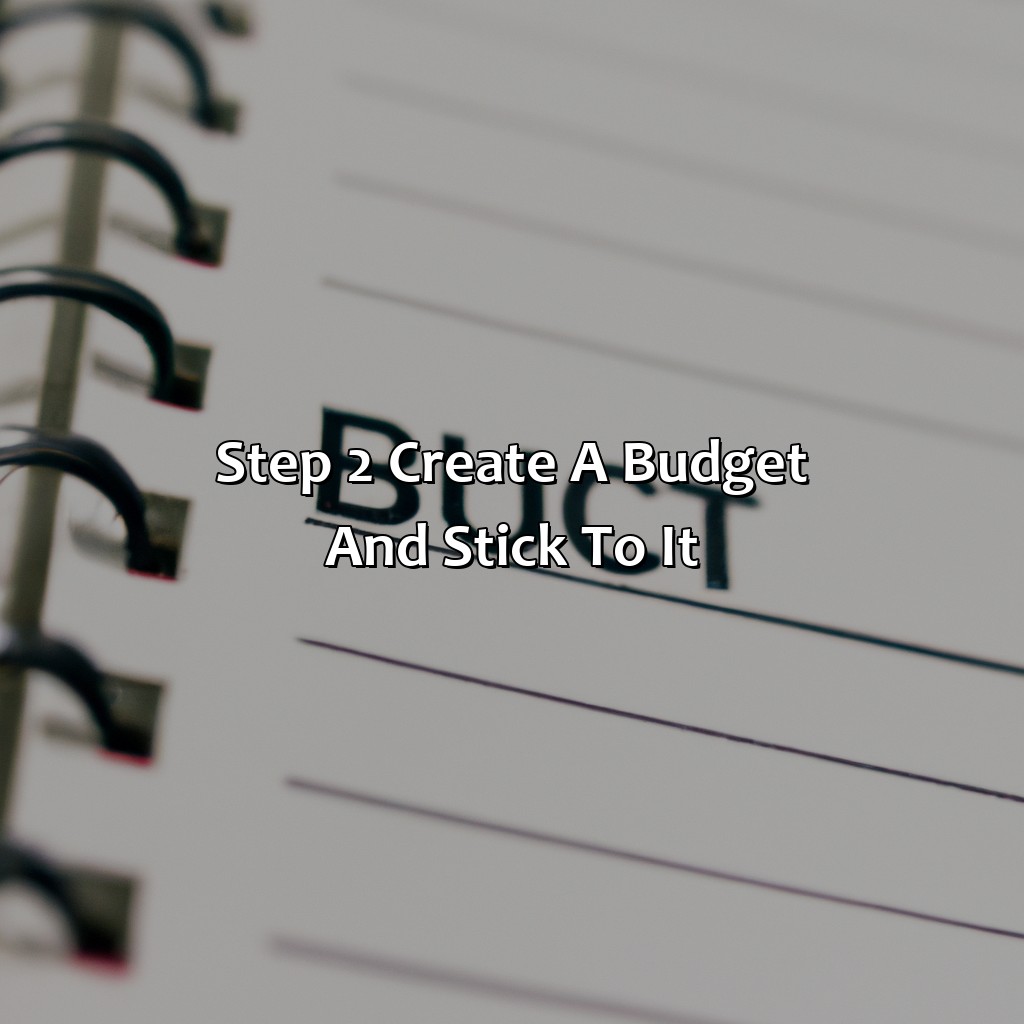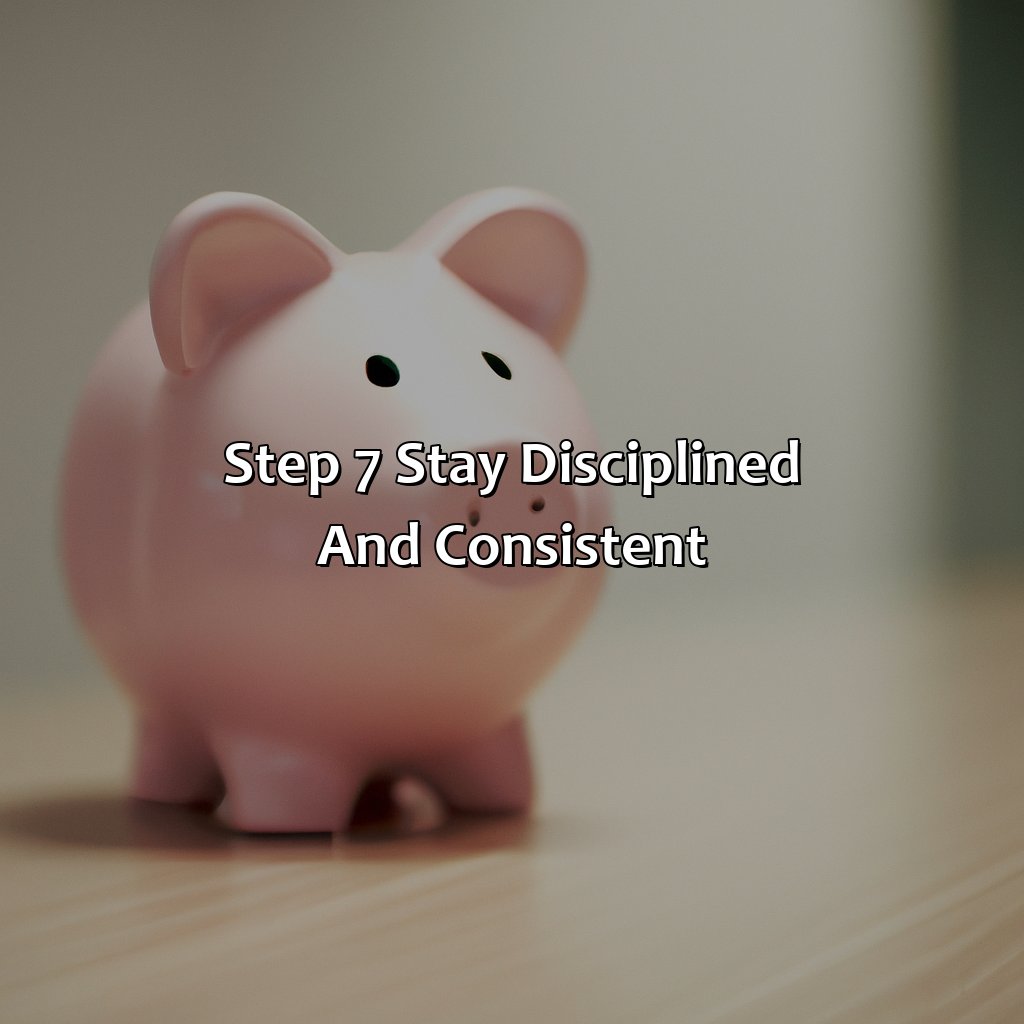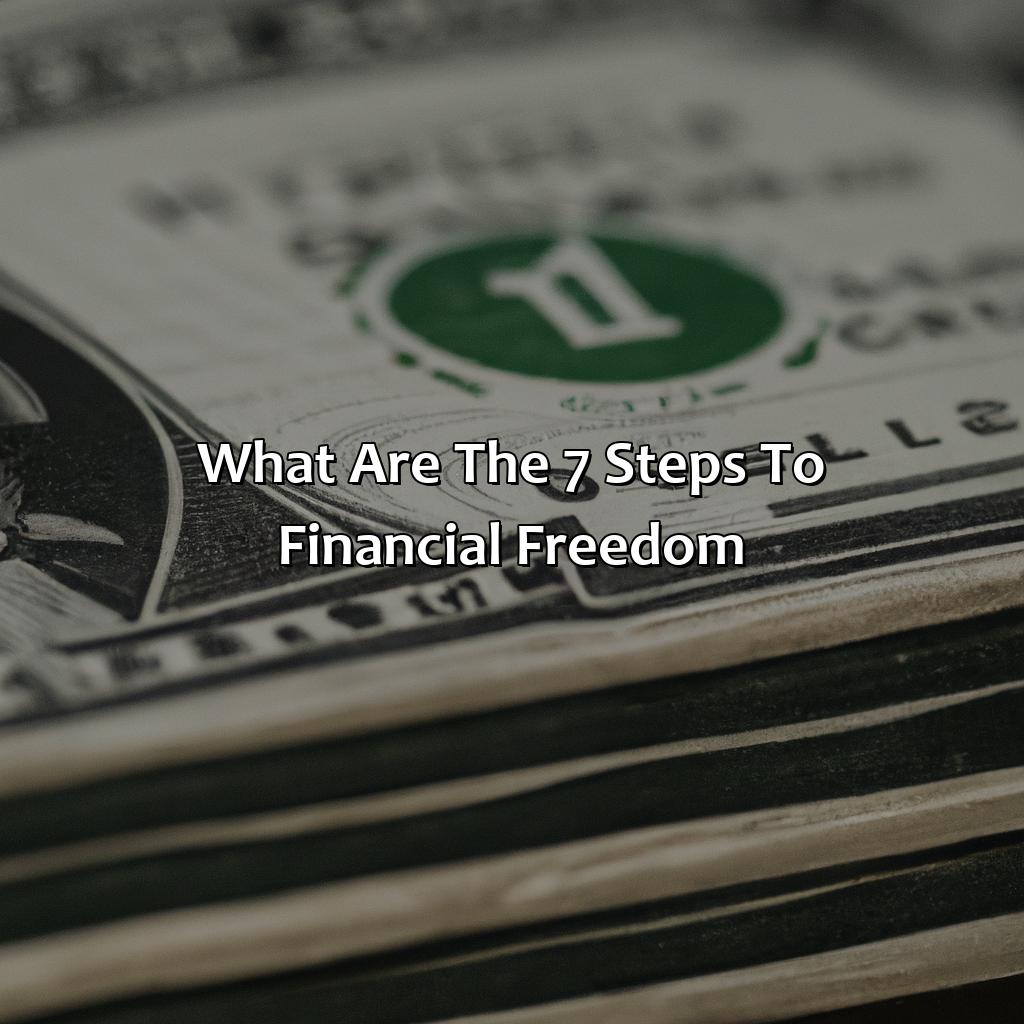What Are The 7 Steps To Financial Freedom?
Key Takeaway:
- Financial freedom is achieved by setting specific financial goals, creating a budget, building an emergency fund, paying off debt, investing for the future, building multiple streams of income, and staying disciplined and consistent.
- To set specific financial goals, identify your priorities, assess your financial situation, and determine the timeline and resources needed to achieve each goal.
- To create a budget and stick to it, track your income and expenses, cut unnecessary expenses, and prioritize saving and investing for the future.
- To build an emergency fund, set aside enough money to cover at least 3-6 months of living expenses, and keep it in a high-yield savings account or other low-risk investment.
- To pay off debt, prioritize high-interest debt, consider consolidation or refinancing options, and make consistent payments to reduce debt over time.
- To invest for the future, consider your risk tolerance, choose diverse investments, and regularly monitor and adjust your portfolio.
- To build multiple streams of income, explore passive income opportunities, develop new skills, and consider starting a side hustle or freelance business.
- To stay disciplined and consistent, track your progress, review and adjust your goals regularly, and prioritize financial education and self-improvement.
Want to take control of your finances and unlock financial freedom? You can achieve this by understanding and implementing the 7 essential steps. Put the power back in your hands and take charge of your financial future.
Step 1: Set Specific Financial Goals
Setting specific financial goals is the first step towards achieving financial independence. The process of setting goals enables you to define what you want and identify the actions required to get there.
- Step 1: Define Clear Financial Objectives
- Figure out your financial objectives: Start by identifying what you want to accomplish with your finances. What is important to you such as buying your dream home, going on vacation, or retiring early? Setting clear priorities will help you create a roadmap to achieving your goals.
- Quantify your objectives: Define measurable goals with deadlines that can be tracked regularly. For example, if you want to buy a new car, decide on the model and price range, set the target date for purchasing the vehicle and figure out sources of funding.
- Breakdown Objectives: Breaking down goals into smaller attainable goals will help reduce anxiety when faced with big-ticket purchases. For example, saving funds for a down payment on a home is easier once you’ve identified what percentage of the purchase amount you need to save. Then, breaking those percentages into fixed, attainable bi-weekly savings will make reaching your goal seem far more feasible.
Identifying your specific financial goals is an essential step towards financial freedom. It will allow you to focus your resources on what is most important. Remember to keep revisiting and adjusting your goals to ensure you stay on track towards attaining your ultimate financial objectives.
Pro Tip: Your financial goals should be SMART: Specific, Measurable, Attainable, Relevant and Timely.

Image credits: retiregenz.com by James Arnold
Step 2: Create a Budget and Stick to It
Creating and adhering to a budget is an essential step towards achieving financial freedom. It involves analyzing your income and expenses, determining where to allocate resources, and monitoring your spending. Here’s how you can go about it.
- Step 1: Evaluate Your Finances – Assess your current financial situation by reviewing all your sources of income and expenses. Calculate your net income – the difference between your income and expenses. This will help you determine your saving potential.
- Step 2: Categorize Your Expenses – Divide your expenses into categories such as housing, transportation, groceries, bills, entertainment, and so on. Identifying these categories will help you prioritize your spending and restrict unnecessary expenses.
- Step 3: Create a Budget Plan and Stick to It – Use a budgeting tool or an app to create a budget plan and track your spending. Allocate your resources towards necessary expenses first and prioritize your saving goals. Regularly monitor your expenses and adjust your budget plan when necessary.
To make your budget plan more effective, consider enlisting the help of a financial advisor who can guide you towards better financial management.
Remember, a budget is not meant to restrict your spending but rather to direct it towards your financial goals. Stick to it consistently, and you’ll eventually achieve financial freedom.
Pro Tip: Set realistic and achievable financial goals and celebrate your small wins along the way. This will motivate you to stick to your budget plan and ultimately, achieve your financial freedom.

Image credits: retiregenz.com by David Washington
Step 3: Build an Emergency Fund
To secure your financial future, it is crucial to have a safety net in case of unexpected events. This involves creating an emergency fund that can cover 3-6 months of living expenses.
Here is a 3-Step Guide to Build an Emergency Fund:
- Assess your monthly expenses – Calculate your monthly expenses and multiply by the number of months you want the fund to cover.
- Open a separate savings account – Keep your emergency fund separate from your regular savings account to avoid confusion.
- Allocate a specific amount each month – Make a budget plan and stick to it to allocate a portion of your income to your emergency fund.
Remember to continuously adjust and contribute to your emergency fund as your financial situation changes.
It is crucial to have an emergency fund as one never knows what the future holds. It can protect you from expensive medical bills, car repairs or job loss.
A friend of mine lost their job and had to sustain the family for four months without an income. They had to dip into their emergency fund to cover daily expenses and had peace of mind knowing that they had financial security during a difficult time.
Image credits: retiregenz.com by Adam Duncun
Step 4: Pay off Debt
As you move towards achieving financial freedom, it’s crucial to focus on reducing debt. Here’s a practical guide on how to achieve this:
- Create a budget – Start by determining your monthly income and allocating a specific amount towards all necessary expenses.
- Prioritize debt repayment – Make a list of all outstanding debts, determine payment due dates, and prioritize the debts with the highest interest rates.
- Cut back on expenses – Consider reducing expenses such as dining out or entertainment to free up extra money to pay down debt.
In addition to these steps, it’s essential to seek professional advice if you’re struggling to manage your debt. Experts can provide you with the necessary strategies based on your unique financial situation.
To speed up the debt repayment process, consider focusing on paying off the debt with the highest interest first. Additionally, paying more than the minimum payment can help reduce the overall interest accrued over time.
Remember, paying down debt is not a one-time thing; it’s a consistent effort that requires discipline and commitment. Making timely payments and being consistent with your budget will help you get closer to achieving financial freedom.

Image credits: retiregenz.com by Yuval Duncun
Step 5: Invest for the Future
Investing for the Future – Building Wealth for Tomorrow
Investing for the future is all about securing your financial future through smart investment decisions. Here are five steps you can take to start building wealth for tomorrow:
- Define your investment goals and risk tolerance.
- Determine your investment strategy, asset allocation and diversification.
- Open an investment account and start investing.
- Monitor your investments and adjust your portfolio as necessary.
- Reinvest your returns to compound your gains.
To ensure the best outcome, it’s essential to do your research, seek professional advice if needed, and stay up-to-date on market trends and economic developments.
Investing can be daunting, but with the right mindset and approach, anyone can start building wealth for their future. Taking calculated risks can yield significant returns in the long run, making investing an important part of any financial freedom plan.

Image credits: retiregenz.com by Joel Arnold
Step 6: Build Multiple Streams of Income
Building Multiple Sources of Income: A Guide to Diversifying Your Earnings
Diversifying your income streams can help you achieve financial stability and freedom. Building multiple sources of income is a crucial step in achieving financial independence. Here’s a guide to help you diversify your earnings:
- Identify your skills and expertise to generate ideas on potential income streams
- Research the market to identify profitable opportunities
- Develop a plan for each income stream, setting realistic goals and deadlines
- Start with low-risk opportunities, such as part-time work or freelancing
- Continuously evaluate your income streams to identify areas for improvement and growth
- Reinvest profits to scale up your successful income streams and identify new opportunities
By building multiple sources of income, you can generate a steady stream of revenue, allowing you to take more risks in pursuing long-term goals and investments. With careful management, diversifying your earnings can be the key to achieving financial freedom.
In addition to diversifying your income streams, consider investing in passive income streams, such as rental property or dividend-paying stocks, to further enhance your financial stability.
A true story: Emily, a graphic designer, built multiple sources of income by offering freelance design services, selling digital products online, and investing in stocks. By diversifying her earnings and continually investing in areas of growth, Emily was able to achieve financial independence and retire early, pursuing her passions full-time.

Image credits: retiregenz.com by Joel Woodhock
Step 7: Stay Disciplined and Consistent
Staying Committed and Steadfast: The Final Step to Attaining Financial Freedom
This step emphasizes the importance of consistency and discipline in achieving financial freedom. Without them, the preceding steps will not yield the desired outcome. Reaching financial goals may be challenging, but the result is worth it.
Here is a 4-step guide to help you maintain consistency and discipline:
- Track your expenses diligently to ensure you remain within budget;
- Use automation tools such as financial apps to minimize the possibility of slip-ups;
- Develop a saving culture by saving a percentage of your income each month;
- Stay focused on your goals and avoid distractions that may lead to spending beyond your budget.
It is crucial to set realistic financial goals and stick to them. Additionally, take advantage of investment opportunities to grow your wealth. Consistency in making modest efforts every day is vital to creating healthy financial habits.
Pro Tip: Having accountability partners to discuss progress and setbacks with can help you stay on track and encouraged along the way.

Image credits: retiregenz.com by Yuval Duncun
5 Facts About the 7 Steps to Financial Freedom:
- ✅ The 7 steps to financial freedom were popularized by author and financial expert, Suze Orman. (Source: Investopedia)
- ✅ The first step is to create an emergency fund that covers 3-6 months of living expenses. (Source: Suze Orman)
- ✅ The second step is to pay off high-interest debt, such as credit card balances. (Source: Suze Orman)
- ✅ The third step is to establish a retirement account and contribute consistently. (Source: Suze Orman)
- ✅ The remaining steps involve creating a long-term investment plan, owning a home, and establishing a living trust. (Source: Suze Orman)
FAQs about What Are The 7 Steps To Financial Freedom?
What are the 7 steps to financial freedom?
The 7 steps to financial freedom are a set of principles and actions that can help you achieve financial independence and security. They include:
- Make a budget
- Pay off debt
- Build an emergency fund
- Save for retirement
- Invest for long-term goals
- Protect your assets
- Giving back
How can making a budget help me achieve financial freedom?
Making a budget is the first step towards achieving financial freedom as it helps you track your income and expenses, identify areas where you can make cuts or adjustments, and prioritize your spending. A budget gives you control over your money and enables you to set realistic financial goals.
What is an emergency fund and why is it important?
An emergency fund is a sum of money set aside to cover unexpected expenses, such as medical bills, car repairs, and job loss. It is important because it provides a safety net that can protect you from financial hardship or debt in the event of an unforeseen circumstance. Experts recommend having 3 to 6 months’ worth of living expenses saved in an emergency fund.
How much should I save for retirement?
The amount you should save for retirement depends on various factors, such as your current age, desired lifestyle, and expected retirement age. However, as a general rule, financial experts recommend saving at least 10-15% of your income for retirement, starting as early as possible to take advantage of compound interest and investment returns.
What is asset protection and how can I ensure I’m protected?
Asset protection is the process of safeguarding your assets from potential creditors or legal claims. To ensure you’re protected, you can take various steps, such as incorporating your business, obtaining liability insurance, and setting up trusts or other legal entities to hold your assets. It’s also important to work with a qualified financial advisor or attorney to determine the best strategy for your situation.
How can giving back help me achieve financial freedom?
While giving back may seem like it would impede financial freedom, it can actually help you achieve it in various ways. Sharing your wealth or resources can create a sense of purpose and fulfillment, which can improve your overall well-being. It can also help build relationships and community, which can lead to opportunities and increase your social capital. Finally, giving back can decrease your tax liability, which can increase your income and financial freedom.


